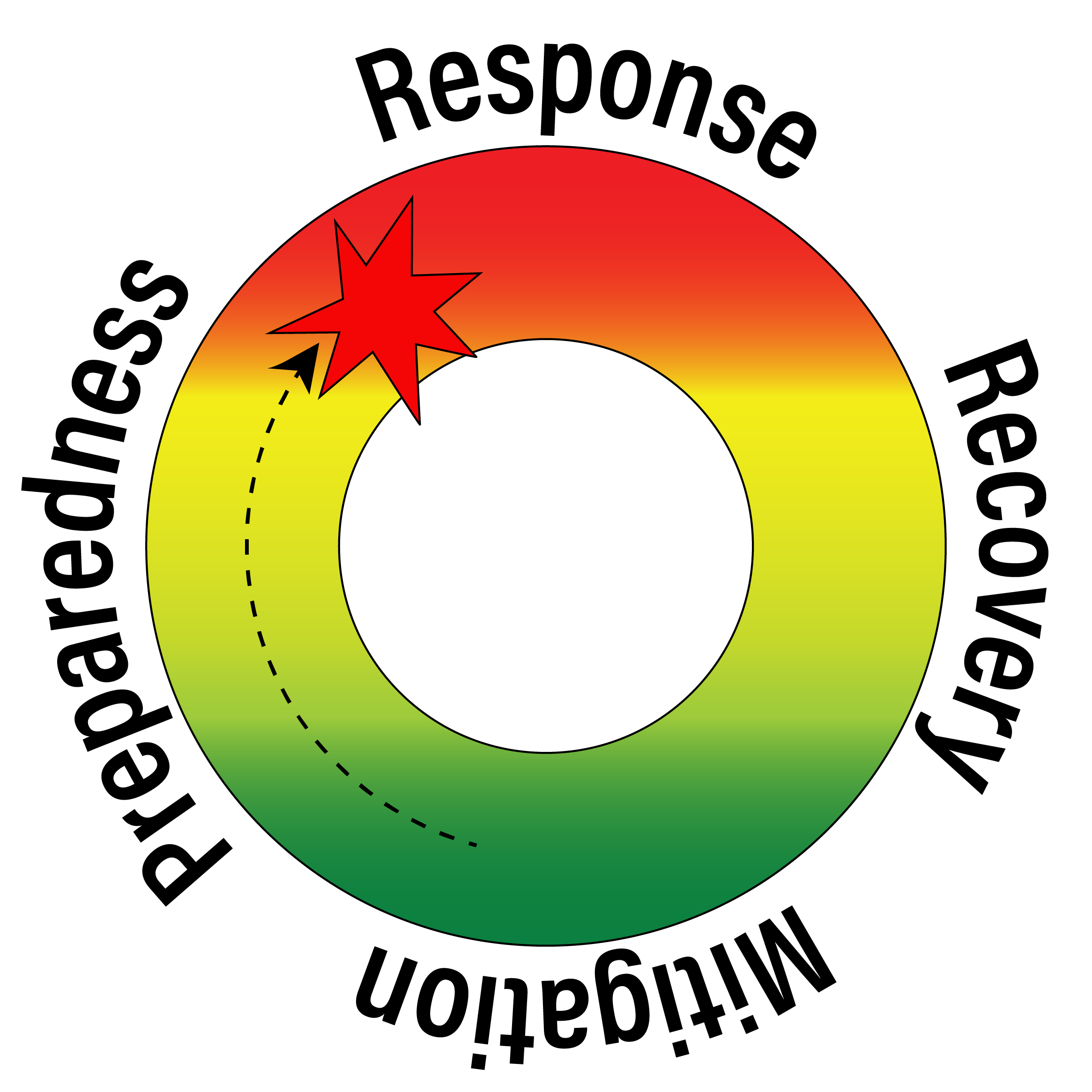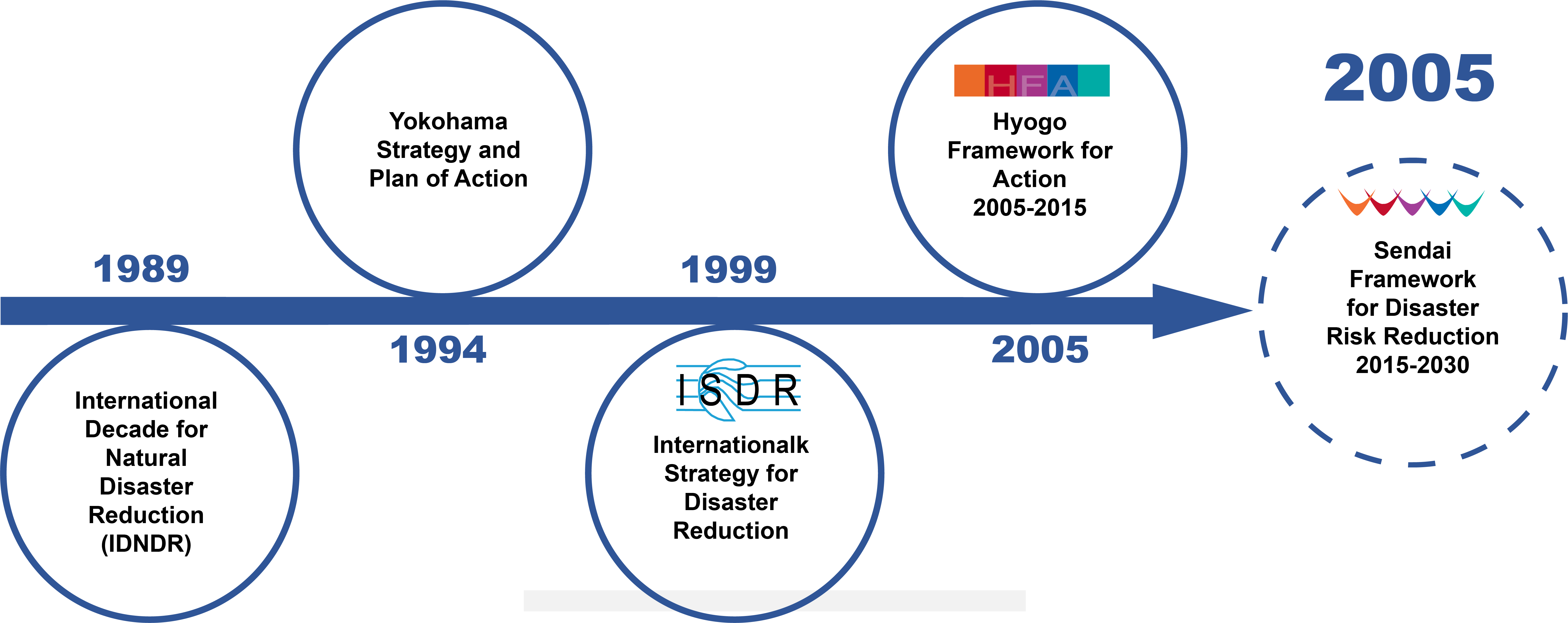
Disaster Management Manual
A manual for practitioners and decision makers!

Disaster Management Manual
A manual for practitioners and decision makers!
"Disaster management aims to reduce or avoid potential losses from hazards, assure prompt and appropriate assistance to victims of disaster, and achieve rapid and effective recovery”. 1 Society depends on well functioning transport during disasters. Developing reliable information collection and sharing systems is the first step of proactive disaster management.
Countries acquire unique disaster management knowledge and develop tailored countermeasure technologies based on their unique disaster experiences. The type of technologies necessary to manage disasters continually adapt as populations grow and society changes. More countries are considering the management of disasters with a series of management techniques applied through the pre-event, event, and post-event phases. 2
These event phases form a Disaster Management Cycle composed of core response, recovery, mitigation and preparedness activities that take place during the lifecycle of a disaster.
Successful activities performed during the Disaster Management Cycle (Figure 1-1) prevent or reduce future emergencies caused by disastrous events as well as minimize their effect on transport networks.

Transport disaster reduction activities in the Hyogo Framework for Action followed by the Sendai Framework for Action provide a strong institutionalized basis for disaster management while ensuring an understanding of worldwide disaster risk and resilience. 3

In the United States, “The National Disaster Recovery Framework (NDRF) provides context for how the whole community works together to restore, redevelop, and revitalize the health, social, economic, natural, and environmental fabric of the community.” 4
“Cities (around the world) have significant opportunities for disaster risk reduction, accelerated response and recovery through land use planning, building codes and regulations, risk assessments, monitoring and early warning, and building-back-better response and reconstruction approaches”. 5
Unprecedented increases in mobile telecommunications and social media data instantaneously conveys vast amounts of important information to road users throughout the world providing real-time disaster awareness.Techniques utilizing Big Data and Social Network Data provide information during all disaster management cycle phases. These include situational awareness and response from Twitter feeds, crowdsourcing earthquake recovery data, and machine learning mapping data sets for mitigation and preparedness.